President Tsai Ing-wen (蔡英文) yesterday on Facebook urged Beijing to face the Tiananmen Square Massacre — also known as the June 4th Incident — with an open mind, and said Taiwan is willing to share its experience of transforming into a democracy with China.
On June 4, 1989, many peaceful protesters were killed when Chinese troops opened fire on pro-democracy demonstrators in Beijing’s Tiananmen Square.
On that day, “a group of students and citizens challenged the reality of mainland China,” Tsai wrote, saying that their actions enlightened am entire generation.
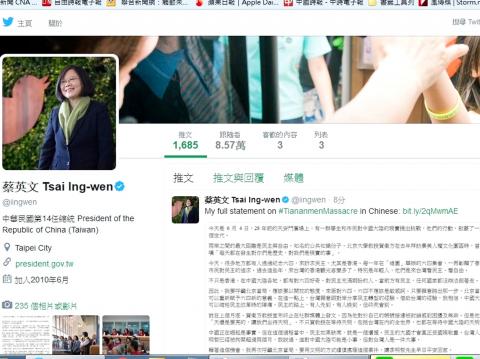
Screen grab from President Tsai Ing-wen’s Twitter
Today, many people in many places are asking for democracy by commemorating the Tiananmen Square protest, particularly Hong Kongers, Tsai wrote.
Over the past few years, there have been more and more Hong Kongers visiting Taiwan to “see democracy and freedom,” she wrote. “When there is democracy ahead, no country can walk backward.”
Tsai urged Beijing to address the incident with an open mind and suggested that the Chinese authorities redefine its meaning.
In that regard, Taiwan is willing to share its experience of transitioning to a democracy so that pain in China can be kept to a minimum, she wrote.
Chinese authorities treated the Tiananmen Square protest as a “counter-revolutionary riot” and used troops and police to suppress it, she wrote.
The 228 Incident and the Kaohsiung Incident were once described by the ruling authorities as “riots,” she wrote.
However, “reality becomes history and history can provide examples,” the president said.
“Mainland China would impress the world if it re-examined the June 4th Incident,” Tsai wrote.
The 228 Incident refers to a crackdown launched by the then-Chinese Nationalist Party (KMT) regime against civilian demonstrations following an incident in Taipei on Feb. 27, 1947. The event marked the beginning of the White Terror era, during which thousands of Taiwanese were arrested, imprisoned and executed. Historians estimate as many as 30,000 people were killed.
The Kaohsiung Incident was a pro-human rights and pro-democracy rally in Kaohsiung on Dec. 10, 1979, that was broken up by police and led to the arrest of most of the well-known opposition leaders, most of whom later became prominent politicians. It is considered an important turning point in the nation’s transition to democracy.
Separately, former president Ma Ying-jeou (馬英九) yesterday on Facebook called on China to allow family members of detained Taiwanese human rights advocate Lee Ming-che (李明哲) to visit him, saying that Beijing should adhere to its promise to “govern the country according to the law.”
Ma, of the KMT, reiterated his proposal that Taiwan should not enter into unification talks with China until it has rehabilitated the victims of the Tiananmen Square Massacre.
“At this juncture, we must not ignore the case of Lee Ming-che,” a Taiwanese human rights and democracy advocate who has been detained by China since March on charges of attempting to “subvert the state,” Ma said.
However serious the allegations against Lee, in accordance with Chinese law, he should be given assurances of his personal safety, his case should be investigated and, if charged, he should stand trial, Ma wrote, adding that his family should be allowed to visit him as soon as possible.
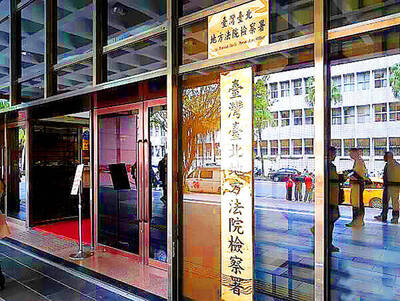
INVESTIGATION: The case is the latest instance of a DPP figure being implicated in an espionage network accused of allegedly leaking information to Chinese intelligence Democratic Progressive Party (DPP) member Ho Jen-chieh (何仁傑) was detained and held incommunicado yesterday on suspicion of spying for China during his tenure as assistant to then-minister of foreign affairs Joseph Wu (吳釗燮). The Taipei District Prosecutors’ Office said Ho was implicated during its investigation into alleged spying activities by former Presidential Office consultant Wu Shang-yu (吳尚雨). Prosecutors said there is reason to believe Ho breached the National Security Act (國家安全法) by leaking classified Ministry of Foreign Affairs information to Chinese intelligence. Following interrogation, prosecutors petitioned the Taipei District Court to detain Ho, citing concerns over potential collusion or tampering of evidence. The
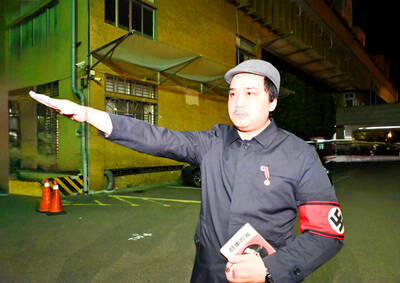
‘FORM OF PROTEST’: The German Institute Taipei said it was ‘shocked’ to see Nazi symbolism used in connection with political aims as it condemned the incident Sung Chien-liang (宋建樑), who led efforts to recall Democratic Progressive Party (DPP) Legislator Lee Kun-cheng (李坤城), was released on bail of NT$80,000 yesterday amid an outcry over a Nazi armband he wore to questioning the night before. Sung arrived at the New Taipei City District Prosecutors’ Office for questioning in a recall petition forgery case on Tuesday night wearing a red armband bearing a swastika, carrying a copy of Adolf Hitler’s Mein Kampf and giving a Nazi salute. Sung left the building at 1:15am without the armband and apparently covering the book with a coat. This is a serious international scandal and Chinese
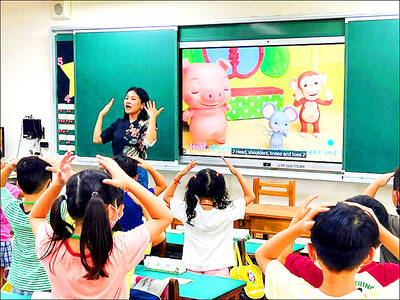
Seventy percent of middle and elementary schools now conduct English classes entirely in English, the Ministry of Education said, as it encourages schools nationwide to adopt this practice Minister of Education (MOE) Cheng Ying-yao (鄭英耀) is scheduled to present a report on the government’s bilingual education policy to the Legislative Yuan’s Education and Culture Committee today. The report would outline strategies aimed at expanding access to education, reducing regional disparities and improving talent cultivation. Implementation of bilingual education policies has varied across local governments, occasionally drawing public criticism. For example, some schools have required teachers of non-English subjects to pass English proficiency
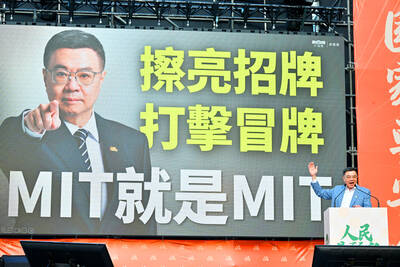
TRADE: The premier pledged safeguards on ‘Made in Taiwan’ labeling, anti-dumping measures and stricter export controls to strengthen its position in trade talks Products labeled “made in Taiwan” must be genuinely made in Taiwan, Premier Cho Jung-tai (卓榮泰) said yesterday, vowing to enforce strict safeguards against “origin laundering” and initiate anti-dumping investigations to prevent China dumping its products in Taiwan. Cho made the remarks in a discussion session with representatives from industries in Kaohsiung. In response to the US government’s recent announcement of “reciprocal” tariffs on its trading partners, President William Lai (賴清德) and Cho last week began a series of consultations with industry leaders nationwide to gather feedback and address concerns. Taiwanese and US officials held a videoconference on Friday evening to discuss the